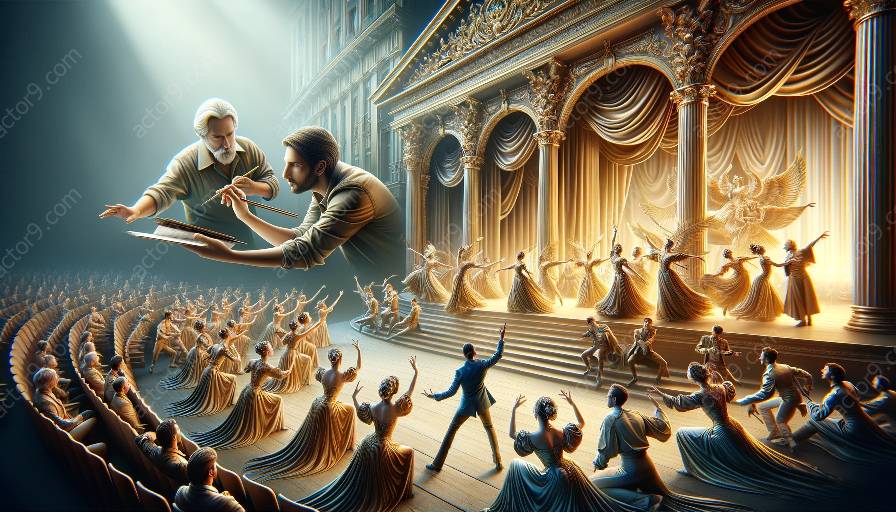Opera has a longstanding tradition as a grand art form that brings together music, acting, and visual elements. A crucial aspect of opera that has gained attention in recent years is the choreography, and more specifically, the implications of incorporating diverse choreography in opera productions. This topic intersects with opera directing, choreography, and performance, providing a rich ground for exploration and discussion.
Exploring Diverse Choreography in Opera Productions
Opera productions have historically drawn from a specific cultural and choreographic tradition, often rooted in Western classical dance forms. However, as the world becomes increasingly interconnected, there is a growing recognition of the importance of incorporating diverse choreography into opera performances. This diversity can manifest itself in various ways, including the inclusion of traditional dances from different cultures, contemporary movement styles, and cross-disciplinary collaborations with choreographers from diverse backgrounds.
The infusion of diverse choreography adds layers of complexity to opera productions, enriching the visual and physical elements of the performances. It creates opportunities for cross-cultural exchanges and fosters a more inclusive and reflective representation of the diverse societies in which opera exists.
The Impact on Opera Directing and Choreography
Opera directors and choreographers play a pivotal role in shaping the overall artistic vision of a production. The incorporation of diverse choreography requires careful collaboration between these two creative forces. It challenges them to not only respect and celebrate cultural diversity but also to integrate it harmoniously within the fabric of the opera. This process demands an in-depth understanding of various movement vocabularies and an openness to experimenting with new choreographic languages.
Furthermore, the cultural implications of embracing diverse choreography in opera productions necessitate a reevaluation of traditional power dynamics and hierarchies within the creative process. Opera directing and choreography, when approached from a culturally conscious perspective, have the potential to become vehicles for social change and cultural dialogue.
Enhancing Opera Performances through Diversity
From the perspective of opera performance, the incorporation of diverse choreography offers an opportunity for artists to expand their creative horizons and engage with movement forms that may be outside their familiar repertoire. This not only challenges performers to grow artistically but also allows them to embody narratives and characters in ways that resonate more authentically with diverse audiences.
At a broader level, the inclusion of diverse choreography in opera performances reflects the evolving cultural landscape of the contemporary world. It acknowledges the multifaceted nature of human expression and invites audiences to witness and celebrate the richness of global choreographic traditions.
The Importance of Context and Sensitivity
While the incorporation of diverse choreography in opera productions brings a wealth of artistic and cultural benefits, it is crucial to approach this integration with context and sensitivity. Respect for the cultural origins and significance of different movement forms is paramount. Opera professionals must navigate the fine line between adaptation and appropriation, ensuring that the incorporation of diverse choreography is done in a manner that honors its roots and creators.
Additionally, the reception of diverse choreography by opera audiences is an integral aspect that cannot be overlooked. Understanding and addressing the expectations and perceptions of audiences from diverse cultural backgrounds is essential in creating a welcoming and inclusive artistic environment.
Conclusion
In conclusion, the cultural implications of incorporating diverse choreography in opera productions are multifaceted and far-reaching. They touch upon the realms of opera directing, choreography, and performance, challenging practitioners to embrace a broader spectrum of movement languages and cultural influences. This endeavor holds the potential to transform opera into a more inclusive, reflective, and socially impactful art form that resonates with diverse audiences globally.































